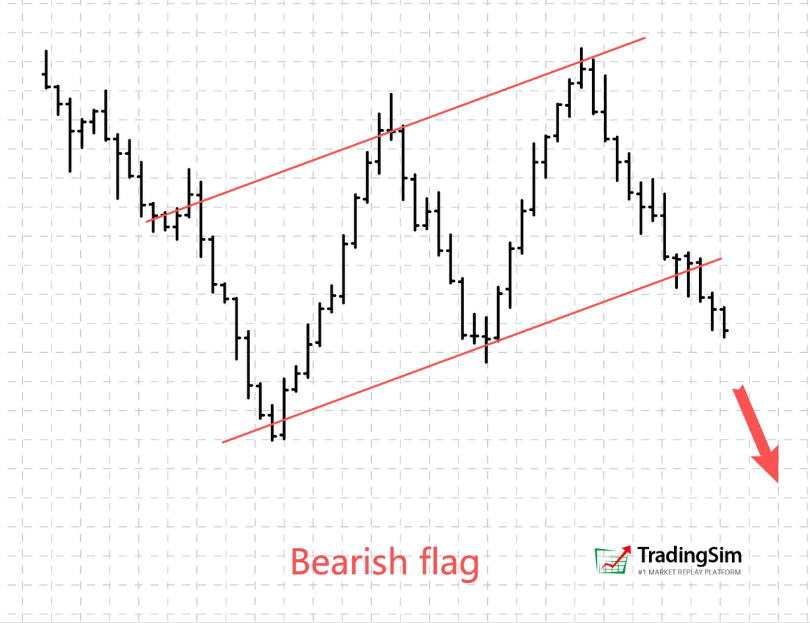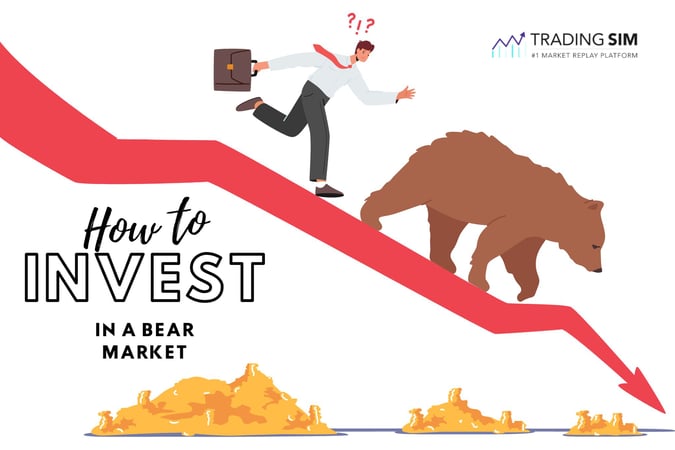What is a Bear Market?
How exactly is a bear market defined? The most commonly used definition for a bear market is when major indices, like the S&P 500 or the NASDAQ, fall by 20% or more, over a relatively short period of time. Why is it called a bear market? The actual origin is hotly debated. Some believe it is the way a bear and a bull attack, with a bear swiping downwards and a bull thrusting its horns upwards. Others believe that bulls charge, while bears retreat into hibernation which brings on a sleepy bear market. While both animals are dangerous, it's the bear market that brings pain to investors.
As investors have learned in 2022, bear markets are often difficult to predict. They usually tend to start out looking like a normal market correction, until the dip keeps on dipping, and before you know it, most stocks are being sold at a loss as panic begins to set in. Bear markets are difficult times for investors and can lead to panic selling and steep capital losses if you sell your positions too soon. For that reason, it is also nearly impossible to time the bottom of a bear market, because, unlike a correction, bear markets have historically lasted for an average of about 289 days or about 9.5 months, according to Ned Davis Research.

Why Are Stocks Going Down?
Stock prices fall in a bear market because increased selling pressure from both retail and institutional investors pushes stocks lower. Being bearish describes an investor or a market sentiment that believes that stocks are either overpriced or that certain macroeconomic headwinds should have an effect on stock price multiples. Bear markets often see price multiple compression, which means that a company’s earnings increase but the stock price does not follow. Prices can fall lower when earnings rise creating an even sharper compression.
Can You Trade During a Bear Market?
Yes! Any type of market has its advantages for specific types of trading. The best stock traders can trade as the market goes up or as the market falls. Since a bear market is characterized by stocks falling in price, traders will often use a shorting strategy or buying put options to capitalize on downward pressure. Once the selling volume has been exhausted, traders will then anticipate a bear market rally or dead cat bounce, when stocks rebound temporarily as investors buy the dips.
But be warned that purely trading the downside of stocks doesn’t often work, even in a bear market. A bear market can often see just as many positive sessions, it’s just that the losing days are far more severe than any market rebounds. Price action can go either way even in a bear market, so it makes for an excellent environment to learn how to trade both sides of a stock.
What is the Best Way to Invest in a Bear Market?
If you’re not interested in actively trading during a bear market, nobody is blaming you. Bear markets can be extremely frustrating and defy most conventional logic. But can a bear market be good for long-term, buy and hold investors? Historically, yes. There’s a reason why they say billionaires are made in bear markets. No matter how much it feels like a bear market will never end, they always do. Here are some ways to beef up your portfolio during a bear market.
Dividend Stocks
It should come as no surprise that the stocks that tend to hold up the best during bear markets are blue-chip, dividend-paying value stocks. These companies typically have a strong business and industry moat that allows them to continue to see high rates of cash flow and profitability even in a slower economy. The dividends these stocks pay out can help to supplement your portfolio when stocks are lower. They provide excellent cash flow to your account, which you can then use to either reinvest in these dividend stocks or gobble up shares of other stocks that have gone on sale.
DOLLAR-COST Averaging
Already have a strong, diversified long-term portfolio? A bear market is a perfect time to add to your positions, lowering the dollar cost average for the stocks you already own. Dollar-cost averaging is an excellent way to improve your long-term gains by having a lower cost basis on the stock. If you originally bought a stock at $50 and you buy again during a bear market at $30. Your cost basis of $40 on that position will look a lot better if the stock returns to a $75 level in the next bull market. Think of it as an unrealized gain of $35 per share now instead of $25 per share originally. This is basic math and obviously, the size of your positions will vary, but this illustrates how simple dollar cost averaging can be beneficial for long-term investors.
Investing in ETFs
ETFs or Exchange Traded Funds can be an excellent way to passively invest for a great majority of investors. Stock picking isn’t easy, and holding a portfolio of ETFs can both hedge against market volatility and provide you with direct exposure to a basket full of stocks. You can dollar cost average on ETFs as well, and a lot of them will also continue to pay out distributions (read as dividends) even during a bear market.
There are also specific types of ETFs you can invest in that might be more beneficial. For example, an inverse ETF can help to protect your portfolio from sudden downside risk. An inverse ETF is one that trades inversely to the broader index that it tracks. An inverse NASDAQ ETF will rise or fall in the opposite direction of the actual NASDAQ index. If the NASDAQ gains 2.0%, the inverse NASDAQ ETF falls by 2.0%, and vice versa. You can probably see why these inverse ETFs would come in handy during a bear market.

How to Actively Trade in a Bear Market?
Actively trading in a bear market takes some skill and patience. It’s why they say that you can tell who the real investors and traders are in a bear market. In a bull market, it’s easy to see your portfolio always in the green. To actively trade in a bear market, you’ll want to be aware of what the markets are doing each and every day. Following trends can be crucial in discovering patterns as well as support and resistance levels. Here are three things to look for on bear market charts.
1. What is a Bear Market Rally?
A bear market rally is a short-lived but often sharp rebound of stock prices in the middle of a bear market. The rally usually comes after a prolonged period of selling, and is quite often confused with being a local bottom or end to the bear market. It’s understandable why investors might think this. Bear market rallies are typically very intense sessions of gains, with indices gaining 3-5% per session. They are a key counter trend for traders who are looking to time a near-term bottom. For investors, they can be confusing and can also be called a bear trap where investors will buy back into stocks at a perceived bottom, before the next leg down of the market hits.
2. What is a Dead Cat Bounce?
A dead cat bounce is similar to a bear market rally except it is usually shorter in duration and followed by a sharp continuation of the recent downtrend. It is difficult to differentiate between a bear market rally and a dead cat bounce as they are happening. Only in hindsight can investors tell the difference between the two. Dead cat bounces are also usually less intense than a bear market rally. Whereas a bear market rally can continue on for a few days, dead cat bounces are often swift and only last for a day or two.
3. How to Trade the Bear Flag?

A bear flag is a technical analysis pattern that is used to determine the continuation of a recent downtrend on a stock chart. How can you spot a bear flag? They are characterized by a strong move downwards followed by a period of rising consolidation, and capped off with another strong leg downwards. The brief period of consolidation can either continue or halt a local downtrend. The bear flag is confirmed by the subsequent move lower following the period of consolidation, which continues the downtrend. By following the stock’s chart, traders can identify another big move down in an asset’s price once the period of consolidation has been confirmed. A bear flag is seen as a very reliable price pattern and is used for all assets including stocks, foreign exchange, and even cryptocurrencies.
How do you Profit From a Bear Market?
In a bear market where stock prices are constantly falling lower, there are a few different strategies to use to trade at a profit. The first is simple: buy stocks at lower prices and hold them for the long-term. This is as straightforward as a buy and hold strategy can get, of course it assumes that you have cash left to invest. Here are a couple of other ways to profit in a bear market.
Put Options
This is probably the most basic way to play a downward trending market. While options trading is certainly not for everyone, there are certainly ways to make great income and profits from them. Holding put options on stocks or indices can be an excellent way to hedge your existing stock positions, or if you are predicting another move lower. Buying a put option is a directional bet that the price of the underlying asset will fall by the expiration date of the contract.
Short Selling
A slightly more advanced way of betting on the downside of stocks, short selling requires you to borrow shares from the brokerage, then you sell them back later at a lower price, locking in your profits. Short selling definitely has its risks though as we all know. If the stock you are shorting sees a short squeeze your losses can be limitless unless you buy shares to cover your short position. Of course, if you are covering your short position, you are buying those shares at a higher price and taking a significant loss on your trade.
Is it Better to Buy in a Bull Market or a Bear Market?
Let’s take a moment to consider this: is it better to buy stocks in a bull market when prices are rising or a bear market when prices are falling? As simple as it sounds, you should never underestimate the power of human psychology. You will often see more buying in a bull market as investors feel FOMO from rising stock prices. Meanwhile, in a bear market, investor sentiment is so negative that they are willing to sell at a loss instead of buying more at a cheaper price. This is how hopeless and deflating a bear market can be to an investor’s mindset. If we look at things analytically, it’s clear that buying stocks in a bear market has long-term benefits, even if you don’t time the bottom exactly.












 Investment Articles
Investment Articles 
